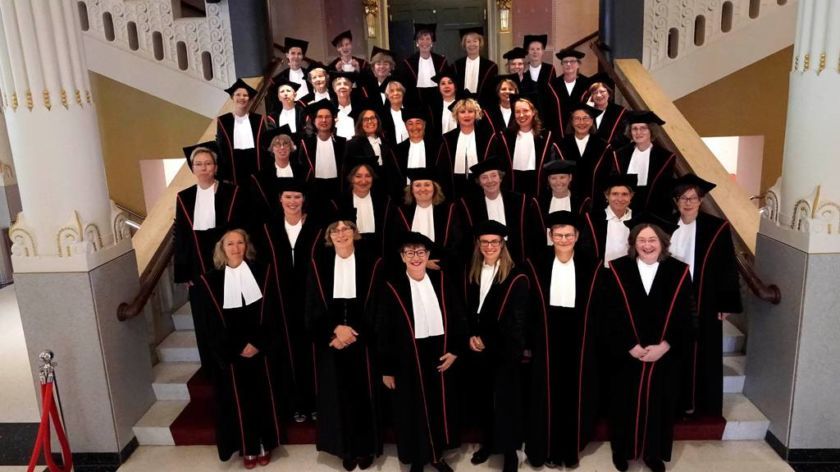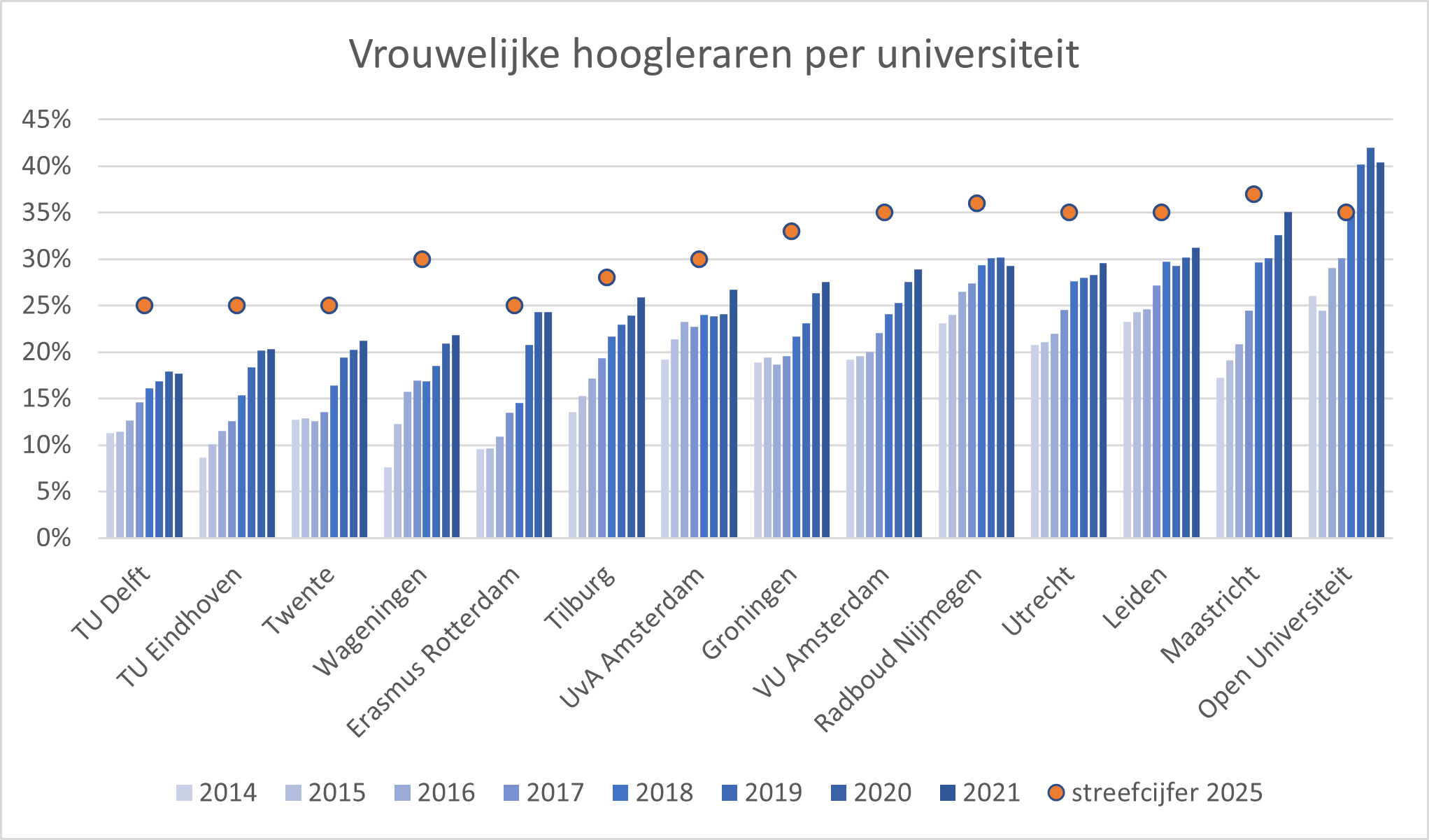-
 Vrouwelijke Radboud-hoogleraren in 2018. Foto: Gerard Verschooten
Vrouwelijke Radboud-hoogleraren in 2018. Foto: Gerard Verschooten
The increase in the number of women at the top of academia is not going fast enough, according to the new Monitor Female Professors, which was presented yesterday. In fact, the share of female professors at Radboud went down, making the goal of 36 percent in 2025 more difficult to reach.
Last year (2021) the share of female professors increased by one percent for a total of 26.7. According to the National Network Female Professors (Landelijk Netwerk Vrouwelijke Hoogleraren, in Dutch, LNVH), that is the least growth in the past five years. ‘At this rate, it will take until 2041 before there is an equal male/female split among professors’, the network states. ‘That is a year later than last year’s prognosis.’
Radboud University even shows a dip in the share of female professors, despite the percentage of female professors in Nijmegen rising steadily in 2019. At the national level, the percentage of female professors was 23 in 2014, while five years later that went up to 30 percent (not including Radboudumc, based on fte numbers).

However, that growth dwindled over the next few years. The percentage went down by one in 2021, consequently dropping Radboud University out of the top-3 of universities with the highest percentage of female professors. The highest scoring institution was the Open University at 40.4 percent, followed by Maastricht, Leiden, and Utrecht.
Influx and exodus
The good news is that the national percentage of female professors rose to 32.4 percent over the last year, an increase of two percent. Additionally, the next few years will see an exodus of male professors becoming emeritus.
‘The number of candidates is not the cause of the low percentage of female professors’
For every male professor about to retire, there is a suitable female replacement waiting in the wings. ‘So, the number of candidates is not the cause of the low percentage of female professors’, as stated by Ashley Terlouw, chair of the Radboud Network Female Professors. ‘The issues lie in actually getting the positions.’
That is why Radboud University presented its gender equality plan in January this year, setting out actions to increase the percentage of female professors. That is highly necessary, according to Terlouw, because the University’s goal of 36 percent in 2025 is still a long way off.
Job interview procedures
An important task is set aside for the interview committees. Terlouw states that those should be more mixed. Additionally, the criteria for female professors need to be made more concrete. ‘People tend to pick those who resemble themselves. By appointing a diverse group and setting clear criteria, that bias can be accounted for.’
Terlouw also thinks that it would be good to directly approach female candidates. ‘Women often don’t feel qualified for the position and are less likely to apply for an interview. Actively encouraging them to apply for professorship would be beneficial.’
But the reasons for professors to leave also need to be kept in mind. ‘In the past, there have been female professors who quit due to an unsafe work environment. But there are other causes that we have yet to properly examine. It would be very valuable to hold exit interviews to discuss people’s motivations for leaving, so that we can better include women in the future.’
Academic ladder
The higher up you go on the academic ladder, the fewer women you’ll meet. More than half of all graduates at Dutch universities is female (53.4 percent); At the national level, there are roughly equal percentages of female PhD students and university lecturers (44.5 percent); 32 percent of associate professors are female, contrasted with 27 percent of full professors.
Translated by Jasper Pesch



